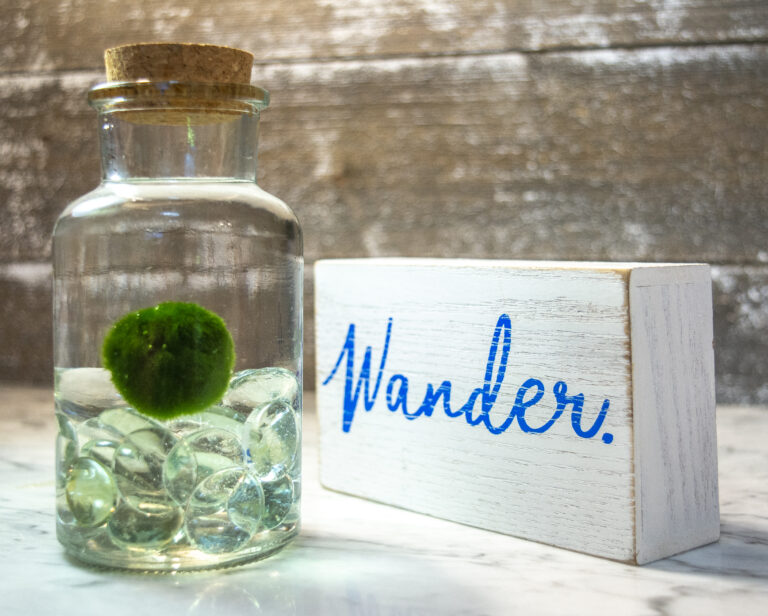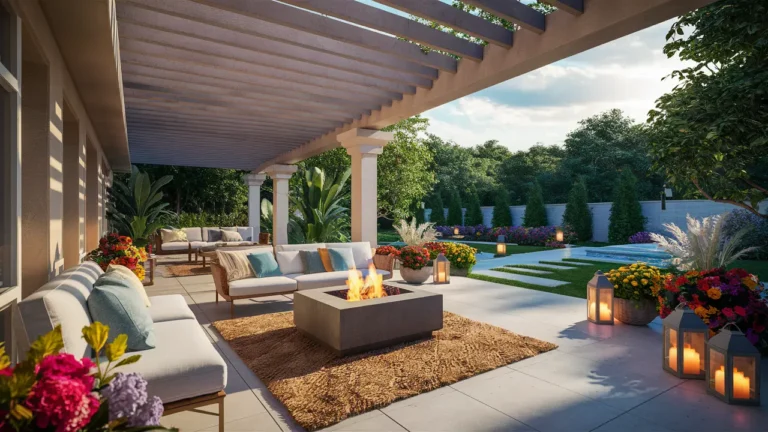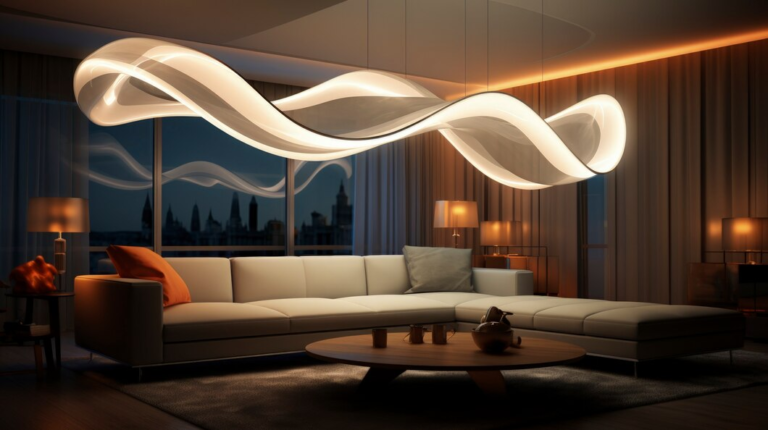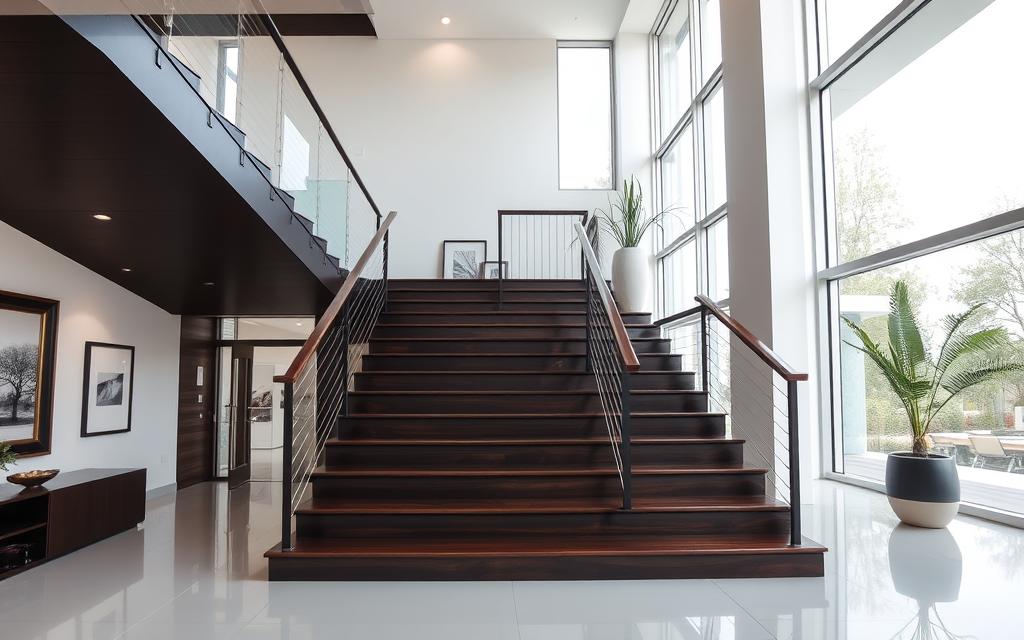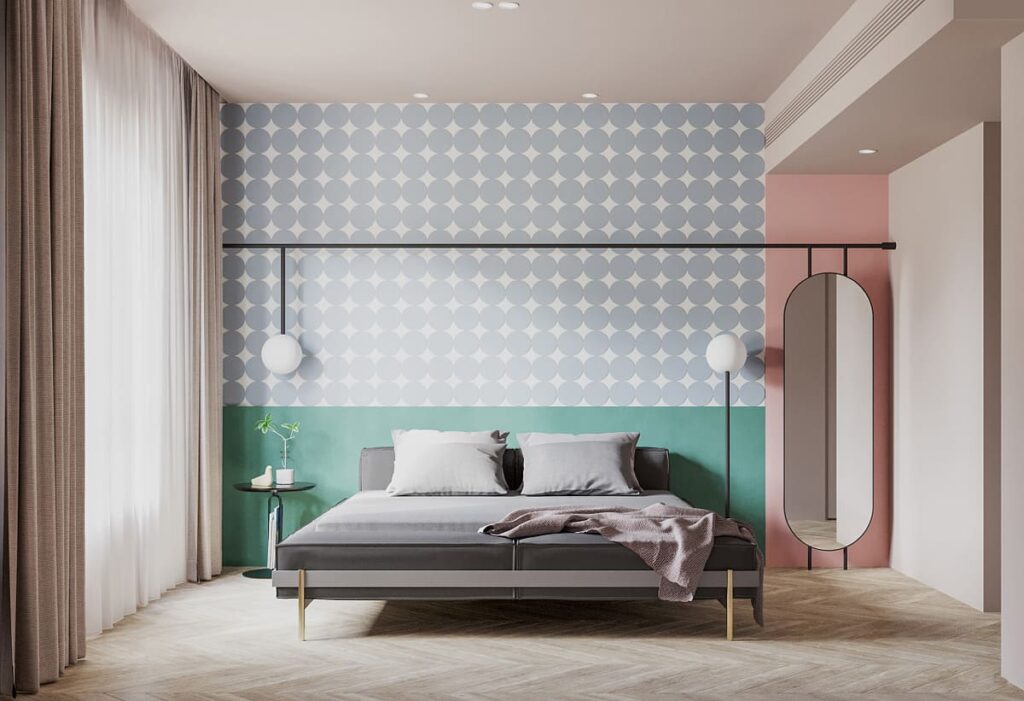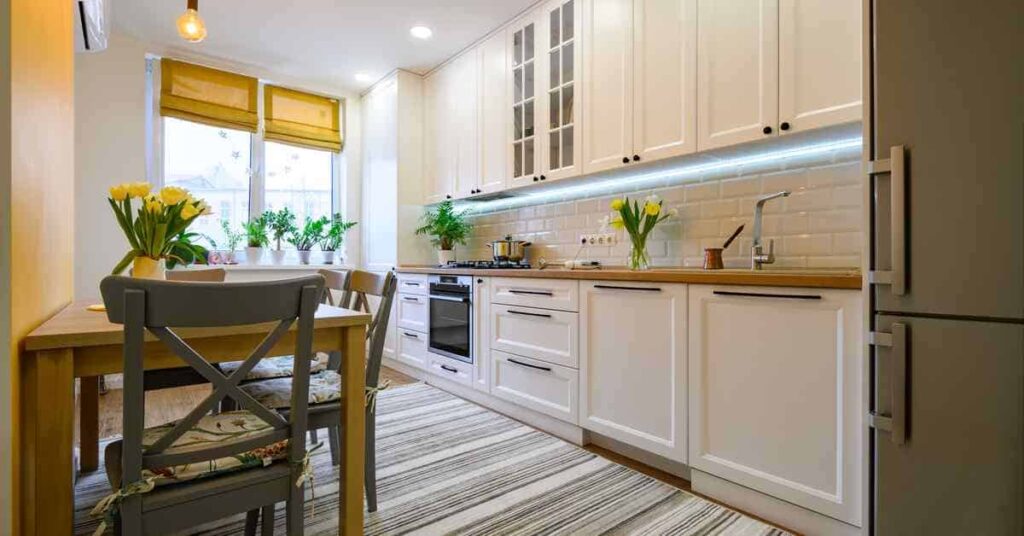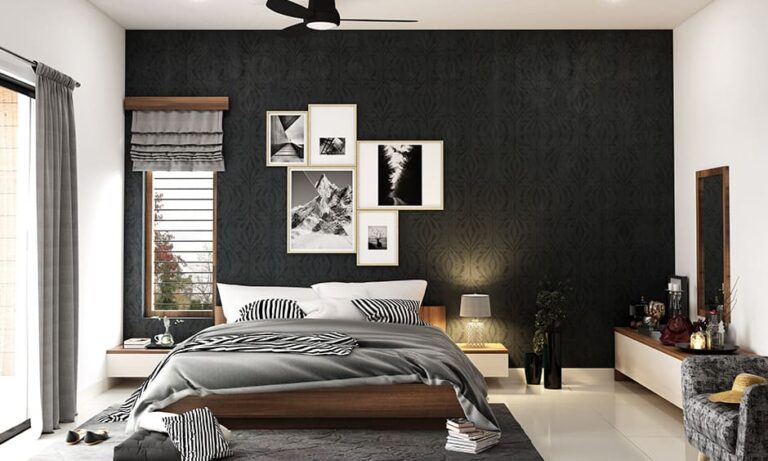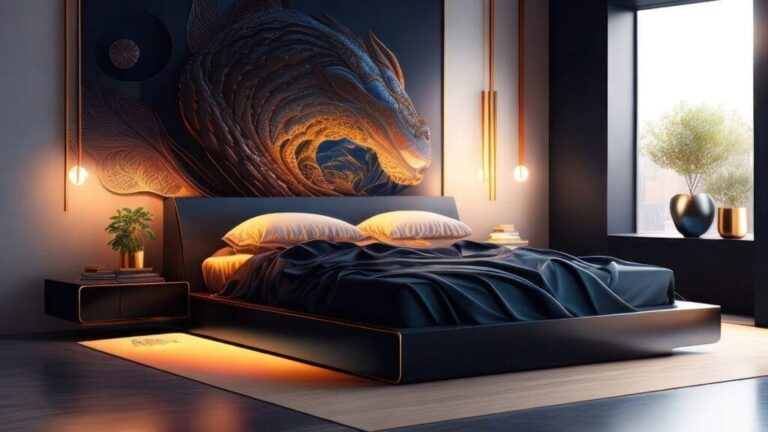The mix of light and dark, seen in dark stairs and light floors, is a big trend in home design. It makes spaces more interesting and has both psychological and practical benefits. This design approach lets homeowners and designers create beautiful and cohesive interiors.
Dark stairs and light floors work well with many styles, from simple monochromatic designs to warm wood tones. By mixing these elements, designers can add depth and drama to a room. This makes the space more engaging and improves its overall feel.
Understanding the Contrast: Dark Stairs Light Floors in Modern Architecture
The mix of dark stairs and bright floors is a big trend in modern buildings. It makes spaces look better and changes how we feel about them. Looking into its history and why it works helps us see why it’s so popular.
The Psychology Behind Light and Dark Contrasts
Our brains love contrasts, and dark stairs against bright floors is a great example. It adds drama and class, and can even change our mood. Dark stairs feel solid, while bright floors make a room feel open and welcoming.
Historical Evolution of Contrasting Design Elements
Using dark stairs and light floors has a long history in building design. It’s seen in everything from old palaces to today’s simple homes. The way we light these contrasts has changed too, becoming a key part of design.
Impact on Spatial Perception
Dark stairs and bright floors can change how we see a room. They create depth and draw our eyes to important spots. This play of light and shadow can make a room seem bigger or cozier, depending on what the designer wants.

“The interplay of light and dark in architectural design is a powerful tool that can evoke emotions, guide the senses, and transform the way we experience a space.”
Design Principles for Combining Shadowy Steps with Luminous Surfaces
Getting the right mix of shadowy steps and luminous surfaces is key in modern home design. By knowing the design rules, homeowners can mix these contrasts well. This makes their space both beautiful and useful.
Color is a big deal here. Dark stair treads ground the space, while light floors make it feel airy. Mixing these colors can make the gloomy ascent and radiant walkways stand out more.
Texture is also important for a unified look. Smooth floors contrast well with the rough look of wooden or stone stairs. Using natural materials like wood or stone adds to the feel and look.
- Leverage color theory to balance dark and light elements
- Experiment with textures to create visual contrast
- Ensure a seamless flow between the staircase and flooring
- Incorporate accent features to highlight the transition
- Prioritize durability for high-traffic areas
By using these design tips, homeowners can make their spaces better. They can make everyday life more special with a mix of shadowy steps and luminous surfaces.

“The interplay of light and dark, smooth and rough, creates a captivating ambiance that invites exploration and discovery.”
Materials and Finishes for Creating the Perfect Contrast
Designing a moody stairwell with gleaming floorboards requires careful material and finish choices. Homeowners and designers need to pick the right woods and stains for dark staircases. They also need to choose the best flooring for light surfaces.
Best Woods and Stains for Dark Staircases
For a dramatic moody stairwell, choose dark woods like walnut, mahogany, or ebony. These woods add depth and elegance. They look amazing against the gleaming floorboards of the interior stair design.
For stains, go for deep colors like espresso, ebony, or charcoal. These hues highlight the wood’s grain and character.
Optimal Flooring Materials for Light Surfaces
Light flooring materials can contrast beautifully with dark staircases. Consider pale hardwoods like maple, oak, or ash. Or, choose sleek tiles or luxury vinyl plank (LVP) flooring.
These light surfaces reflect light, balancing the dark stairwell.
Durability Considerations for High-Traffic Areas
In areas with lots of foot traffic, choose durable materials. Opt for finishes and flooring that resist scratches and wear. This keeps the interior stair design looking great for years.

By picking the right materials and finishes, you can create a striking contrast. This contrast can make a stairwell a stunning feature. It adds beauty and inspiration to any space.
Lighting Solutions for Dark Stairs Light Floors
Creating the right mix of dark stairs and light floors needs careful thought. The contrast between shadowy steps and bright floors can look amazing. But, it’s also important to think about safety and looks.
One key part is placing illuminated steps wisely. Recessed lights along the stairs can show off the staircase’s shape. Wall sconces or pendant lights add a warm feel, making the staircase aesthetics better.
- Recessed lighting along stair treads for enhanced visibility
- Strategically placed wall sconces or pendants for ambient illumination
- Dimmable lighting controls for adjustable brightness levels
Adding natural light is also crucial. Big windows or skylights can make the stairs and floors look even better. Using both artificial and natural light, designers can make a stairway that looks great and works well.
“The right lighting can transform a space, elevating the staircase aesthetics and creating a truly remarkable visual experience.”
When choosing lighting, think about the space, the mood you want, and the staircase’s needs. By finding the right mix of illuminated steps and ambient lighting, you can make a stairway that’s both beautiful and useful.
Creating Visual Flow with Contrasting Illumination
Designing spaces with dark stairs and light floors requires careful planning. You need to create a smooth visual flow throughout the home. This can be done by using transitional design elements, balancing proportions, and placing accent features wisely.
Transitional Design Elements
Transitional design elements are key in linking dark stairs with light floors. Use materials, textures, or finishes that connect the two. For example:
- Wooden handrails or balustrades that echo the stair treads
- Lighting fixtures with a mix of dark and light finishes
- Decorative accents that incorporate both light and dark tones
Balance and Proportion Tips
Getting the balance and proportion right is crucial. Make sure the scale and placement of dark and light elements are in harmony. This will create a visually appealing and cohesive design. Consider:
- Stair width in relation to the overall space
- Flooring pattern and tile/plank size
- Lighting placement and intensity to avoid visual imbalance
Accent Features and Focal Points
Using strategic accent features and focal points can draw the eye and unify the space. Think about:
- Striking pendant lights or chandeliers above the staircase
- Decorative wall sconces or recessed lighting to highlight architectural details
- Artwork, mirrors, or other visual elements that complement the contrasting illumination
By combining these design elements thoughtfully, you can create a visually cohesive and captivating environment. This will enhance the architectural lighting and staircase aesthetics of the space.
Conclusion
The mix of dark stairs and light floors can change modern home design. It makes spaces look great and work well together. This design makes homes look better and changes how we see and use them.
Using dark stairs and light floors smartly can make a room look amazing. It also brings benefits like better mood and a sense of history. This design is great for anyone wanting to make their home look and feel better.
If you like the look of dark wood stairs or light floors, this article can help. It gives you ideas to make your home look good. Remember, the secret is to balance dark and light well. Use the right materials, lighting, and design to make it work.
FAQ
What is the psychology behind using dark stairs and light floors in modern home design?
Dark stairs and light floors can change how we feel in a room. Dark stairwells add drama and mystery. Light floors balance and brighten the space.
This mix of light and shadow can make us feel different emotions. It can change how we see the home’s design.
How have dark stairs and light floors evolved in modern architectural design?
Dark stairs and light floors have a long history in design. They’ve been seen in everything from grand palaces to modern homes. This mix has changed with time, showing how tastes have evolved.
What design principles should be considered when combining dark stairs with light floors?
To blend dark stairs and light floors well, you need to think about design. Color, texture, and layout are key. Designers use tricks like lighting and accents to make it work.
What are the best materials and finishes for dark stairs and light floors?
Choosing the right materials is important for contrast. For dark stairs, woods like oak or walnut work well. For light floors, consider hardwood, engineered wood, or stone.
Think about how easy they are to clean, especially in busy areas.
How can lighting solutions enhance the contrast between dark stairs and light floors?
Lighting makes the contrast pop. Use lights like recessed lights and sconces to highlight the stairs and floors. Natural and artificial light together can make the space feel moody and bright.
What design elements can be used to create a seamless visual flow when combining dark stairs and light floors?
To make dark stairs and light floors work together, focus on transitional design. Use accents and details to balance the space. Material choice, lighting, and layout are also important for a smooth transition.

